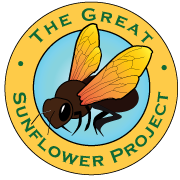
My Pollinator garden (Squirrel Kingdom, MN) has been an area of a bit of neglect in a formal way. I have planted natives and a few annuals in a hodge-podge way.
I have been aware that the bumbles love the blooms on my hosta collection in the backyard These non-natives have provided nectar and pollen all summer long, and the adjoining bee garden is cut back only is late spring.
This year was the first time I looked at the bumblebees- My garden had the endangered Rusty-patched and at least 8 other species of bumbles. I now use iNAT, ,beespotter, bunbebeewatch.
I
Which garden or space are you describing?:
How large is your yard?:
25.00
square yards
Are there low traffic areas where the soil is not turned over, tilled or plowed?:
Yes
Are there areas dead wood, brush piles or snags present?:
Yes
Are there areas with pithy twigs (elderberry, cane fruit, sumac, etc…)?:
Yes
Do you have native bunchgrasses?:
Several areas or one large area.
How many flowers in your garden bloom in spring?:
10 or more
How many flowers in your garden bloom in fall?:
10 or more
How many flowers in your garden bloom in summer?:
10 or more
Are flowers planted in clumps?:
Yes.
How much mulch is on the ground?:
None.
Is there fresh, clean water always available with a perch that bees could stand on and drink?:
Yes
Does the garden use herbicides?:
No.
Are pesticides used in the garden?:
No
